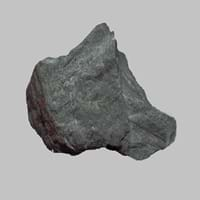Definition
Taconite is a low-grade iron ore which belongs to sedimentary rock and containing about 27% iron and 51% silica
It is a metamorphic magnesium rich rock because it is composed of the mineral talc
Origin
Western Australia, Minnesota
USA
Discoverer
Newton Horace Winchell
Unknown
Etymology
From the name of Taconic Mountains in New England
From 17th century, because of its greasy feel and use like a soap
Class
Sedimentary Rocks
Metamorphic Rocks
Sub-Class
Durable Rock, Medium Hardness Rock
Durable Rock, Soft Rock
Group
Not Applicable
Not Applicable
Other Categories
Coarse Grained Rock, Opaque Rock
Fine Grained Rock, Opaque Rock
Texture
Banded, Trellis
Polished
Color
Red, Reddish Brown
Black, Black to Grey, Green, Grey
Durability
Durable
Durable
Appearance
Layered, Banded, Veined and Shiny
Dull, Banded and Foilated
Interior Uses
Decorative Aggregates, Entryways, Flooring, Homes, Interior Decoration
Bathrooms, Decorative Aggregates, Homes, Interior Decoration
Exterior Uses
As Building Stone, Garden Decoration, Paving Stone
As Facing Stone, Garden Decoration
Other Architectural Uses
Curbing
Curbing
Construction Industry
As Dimension Stone, Used for flooring, stair treads, borders and window sills.
Manufacture of Magnesium and Dolomite Refractories
Medical Industry
Not Yet Used
Taken as a Supplement for Calcium or Magnesium
Antiquity Uses
Artifacts
Artifacts, Jewellery, Monuments, Sculpture
Commercial Uses
As a touchstone, Cemetery Markers, Creating Artwork
Cemetery Markers, Creating Artwork, Gemstone, Jewelry, Manufacture of Soap, Solvents, Dyes, Plastics and Fibres, Production of Lime, Source of Magnesia (MgO)
Types
Not Available
Not Available
Features
Is one of the oldest rock
Host Rock for Lead
Archaeological Significance
Famous Monuments
Data Not Available
Christ the Redeemer in Rio de Janeiro, Stonehenge in English county of Wiltshire
Famous Sculptures
Data Not Available
Data Not Available
Pictographs
Not Used
Used
Petroglyphs
Not Used
Used
Formation
Taconite is a type of sedimentary rock formed when a river carries or transports pieces of broken rock as it flows. When the river reaches a lake or sea, its load of transported rocks settles or deposits at the bottom of sea or lake.
Soapstone is a talc-schist, which is a type of metamorphic rock and it is largely composed of the mineral talc and is thus rich inmagnesium.
Mineral Content
Hematite, Magnetite, Quartz
Albite, Apatite, Biotite, Calcite, Carbonate, Clay Minerals, Hornblende, Ilmenite, Micas, Plagioclase, Pyroxene, Quartz
Compound Content
Fe, Iron(III) Oxide, Silicon Dioxide
CaO, Mg, MgO
Types of Metamorphism
Not Applicable
Burial Metamorphism, Cataclastic Metamorphism, Contact Metamorphism, Hydrothermal Metamorphism, Impact Metamorphism, Regional Metamorphism
Types of Weathering
Biological Weathering, Mechanical Weathering
Not Applicable
Types of Erosion
Chemical Erosion, Coastal Erosion, Glacier Erosion, Water Erosion, Wind Erosion
Not Applicable
Grain Size
Large and Coarse Grained
Fine Grained
Fracture
Uneven, Splintery or Conchoidal
Conchoidal
Porosity
Highly Porous
Less Porous
Compressive Strength
Not Available
Cleavage
Imperfect
Perfect
Specific Gravity
5-5.3
2.86
Transparency
Translucent to Opaque
Opaque
Density
Not Available
2.8-2.9 g/cm3
Resistance
Heat Resistant, Impact Resistant, Pressure Resistant, Wear Resistant
Heat Resistant, Pressure Resistant
Deposits in Eastern Continents
Asia
China, India, Iran, Iraq, Oman, Russia, Saudi Arabia, Taiwan, Thailand, Vietnam
China, India, Indonesia, Japan, North Korea, Russia, Saudi Arabia, Singapore, South Korea, Sri Lanka, Tajikistan, Thailand
Africa
Kenya, Morocco, South Africa, Tanzania
Egypt, Ethiopia, Ghana, South Africa, Western Africa
Europe
Austria, France, Greece, Italy, Malta, Poland, Portugal, Serbia, Spain, Sweden, United Kingdom
Austria, England, Finland, France, Germany, Greece, Spain, Sweden, Switzerland, United Kingdom
Others
Greenland, Mid-Atlantic Ridge
Not Yet Found
Deposits in Western Continents
North America
Canada, Mexico, USA
Canada, USA
South America
Bolivia, Brazil
Colombia
Deposits in Oceania Continent
Australia
New South Wales, Queensland, South Australia, Western Australia
Central Australia, New Zealand, Queensland
All about Taconite and Soapstone Properties
Know all about Taconite and Soapstone properties here. All properties of rocks are important as they define the type of rock and its application. Taconite belongs to Sedimentary Rocks while Soapstone belongs to Metamorphic Rocks.Texture of Taconite is Banded, Trellis whereas that of Soapstone is Polished. Taconite appears Layered, Banded, Veined and Shiny and Soapstone appears Dull, Banded and Foilated. The luster of Taconite is earthy while that of Soapstone is greasy. Taconite is available in red, reddish brown colors whereas Soapstone is available in black, black to grey, green, grey colors. The commercial uses of Taconite are as a touchstone, cemetery markers, creating artwork and that of Soapstone are cemetery markers, creating artwork, gemstone, jewelry, manufacture of soap, solvents, dyes, plastics and fibres, production of lime, source of magnesia (mgo).










